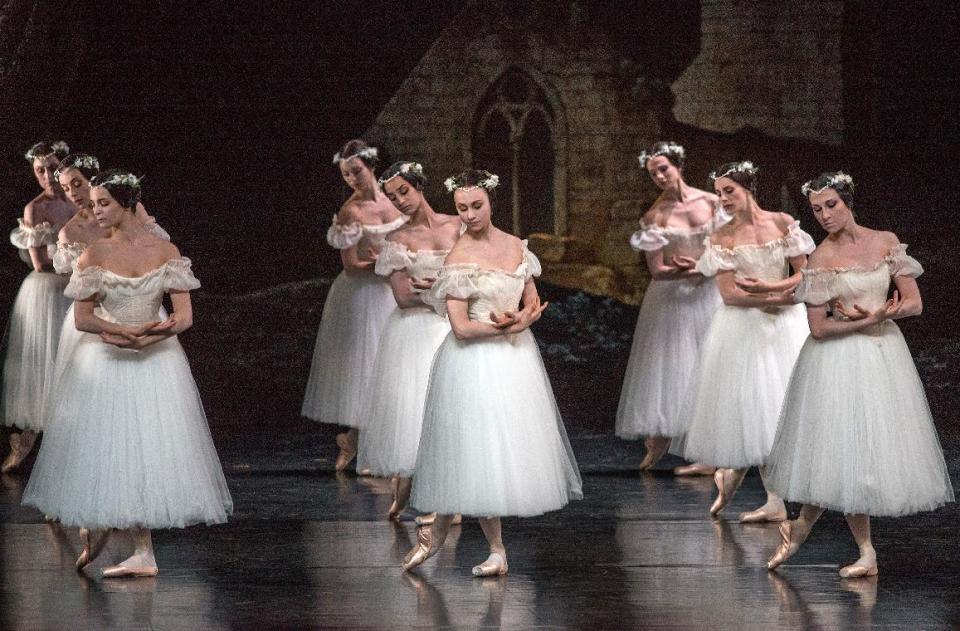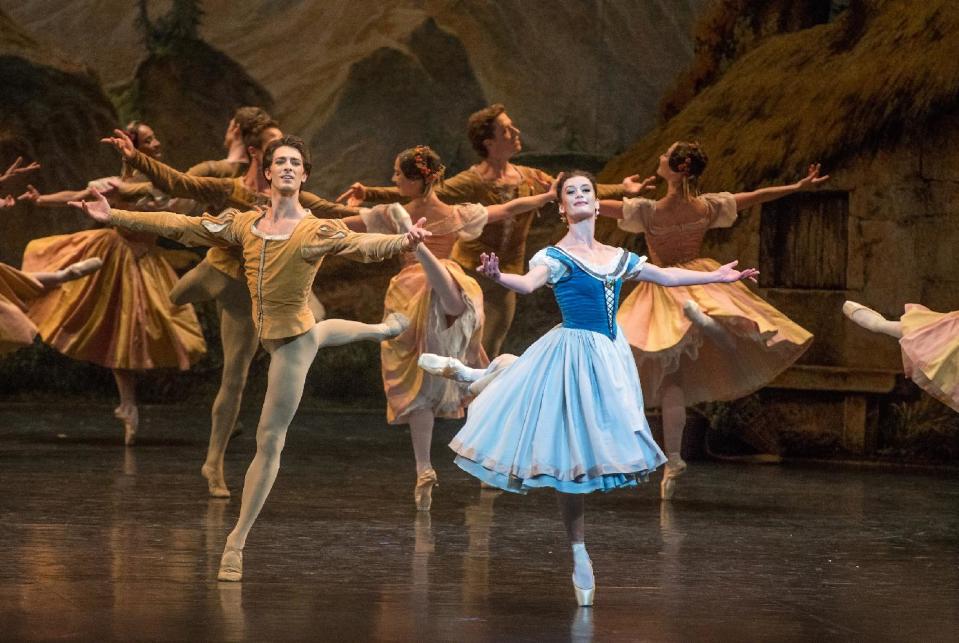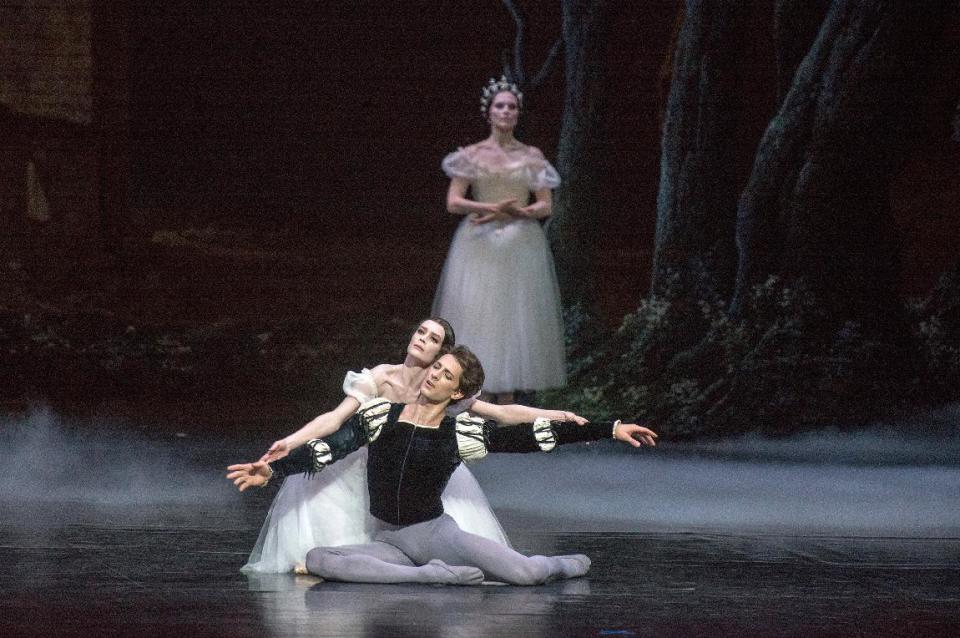Paris visitors make a splash in NY dance world
NEW YORK (AP) — When one of the most highly regarded dance troupes in the world hits New York for the first time in 16 years, there's bound to be a lot of buzz. Especially when the visitors are the ever-stylish and gorgeous dancers of the Paris Opera Ballet.
And so there was an audible "Ahh" at Lincoln Center's David H. Koch Theater when the curtain first rose on a two-week Lincoln Center run that ended this past weekend. Arrayed across the stage were some 35 dancers in shimmery white, for the women, and black-and-white for the men. Ballet dancers always look elegant, but somehow these looked more so.
The program that followed, though — a mix of three 20th-century French works — turned out not to be the best vehicle to display the true talents of these accomplished dancers. Nor was the third program of the run, an ambitious modern dance-opera choreographed by the late Pina Bausch that radically divided audiences, with some finding it profound and others finding the choreography repetitive, even tedious.
Indeed, though the Paris Opera Ballet clearly aims to retain a modern edge with such works, it was with one of the most traditional classical ballets — the beloved "Giselle" — that the company united New York fans in undiluted praise.
Virtually everyone who loves ballet loves "Giselle," the quintessential Romantic-era ballet about a spurned maiden who dies of a broken heart, yet returns in the afterlife to save her lover from death. But few can claim ownership as much as the Paris Opera Ballet. "Giselle" was created for the company, and it opened in 1841 — which, if you're counting, is 171 years ago.
From the storybook sets to the luxurious costumes to the huge corps of dancers — 26 Wilis, or ghosts of betrayed maidens, in the second act — it was clear that this was a gold standard "Giselle." In the dancing of the corps alone, the hallmarks of the company were apparent: precision, uniformity, elegance. Watching them, one understood the effects of a system where dancers train at the same school from childhood, rise throughout the ranks together, live together and know each other intimately.
That system was equally apparent when watching the POB's "etoiles," or star dancers. In many other companies — American Ballet Theatre, for example — dancers are imported from across the globe, leading to a broad variety in style, not to mention a more personality-driven emphasis. In the Paris company, virtually all the stars have come up through the ranks, leading to a more coherent style.
And a subtler one. As Giselle, the doomed peasant maiden, and Albrecht, the callous nobleman who woos but cannot marry her, Aurelie Dupont and Mathieu Ganio relied less on dramatic flourishes and more on storytelling. Dupont, at 39, was a more mature Giselle than in many portrayals, but her dancing was light and delicate.
Her mad scene at the end of Act I, when Giselle realizes she has been betrayed, was understated but heartbreaking nonetheless. In Act II, back from death to protect her lover from the vengeful Wilis, she seemed to enter a different realm, almost looking like a Stepford Wife — in graceful tulle and en pointe, of course.
Ganio was technically impressive, with strikingly long legs and a buoyant jump. But he was effective also in the smaller dramatic gestures, as a cad who suffers deep remorse. Also strong on the dramatic end was Vincent Chaillet as Hilarion, the peasant who also loves Giselle.
The company's run closed over the weekend with Bausch's "Orpheus and Eurydice," a four-scene dance-opera to the music of Christoph Gluck. Whatever you think of Bausch — some find her serpentine arm movements and spine swivels repetitive, others mesmerizing — it was fascinating to see the three key dancers represented onstage by singers as well, serving as narrators in a sense.
The sheer energy that goes into this production is in itself worth admiring. The real shame: for most of the New York audience, it was impossible to know what was going on. In an opera house, there would be surtitles for the German, but here, the dance audience was left to divine the story.
And to appreciate the dance — which, in the hands of the beautiful, imposing and impossibly limber Marie-Agnes Gillot as Eurydice, the doomed wife, was certainly worthwhile. Watching her express the sorrow of separation in the final scene, in her shocking-red long gown, was as heart-rending as watching Dupont's Giselle self-destruct.
It's worth noting that Dupont and Gillot are both in their late 30s, and thus nearing the mandatory retirement age — 42 — for all Paris Opera Ballet dancers. (Another celebrated company dancer, Clairemarie Osta, gave her final performance during the New York run.) So this U.S. tour — there were earlier stops in Chicago and Washington, D.C. — was a chance for audiences to see some of these dancers for the first and last time.
Sixteen years is too long. Hopefully the Paris Opera Ballet will be back much sooner next time.
___
Online:
http://lincolncenterfestival.org




